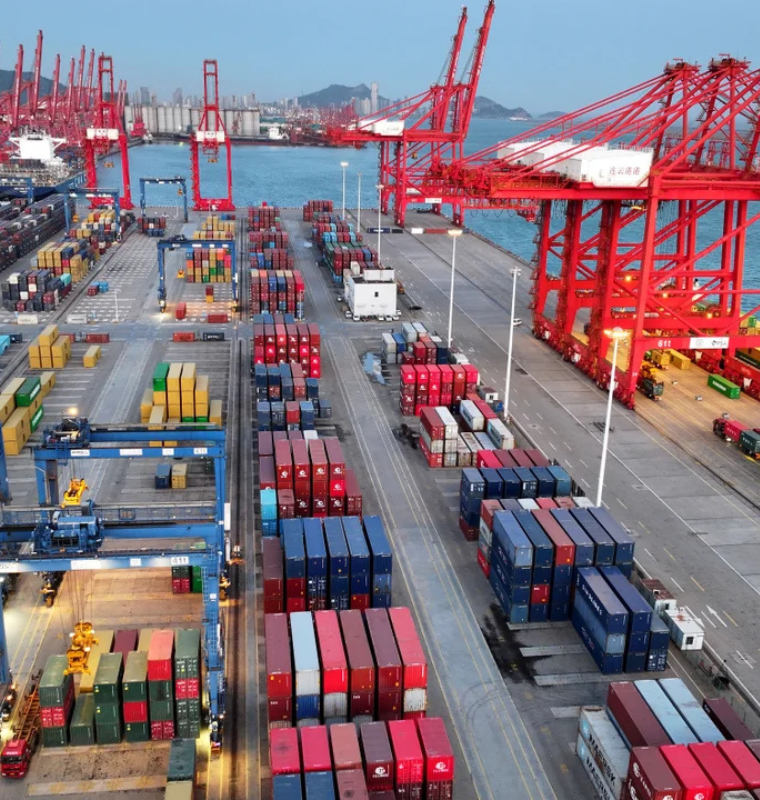Singapore Lifts 2025 Growth Outlook After Strong Third-Quarter Performance
Singapore Lifts 2025 Growth Outlook After Strong Third-Quarter Performance
By
David Goldfarb
Last updated:
November 21, 2025
First Published:
November 21, 2025

Photo: The Straits Times
Singapore Raises Forecast Amid Unexpected Economic Strength
Singapore has sharply upgraded its economic outlook for 2025 following a stronger-than-anticipated performance in the third quarter. The Ministry of Trade and Industry announced that GDP growth next year is now expected to reach around 4 percent, a substantial increase from the earlier projected range of 1.5 to 2.5 percent. The revision comes as global conditions prove more durable than expected and key sectors, particularly electronics, show renewed momentum.
For the first nine months of 2025, the economy expanded 4.3 percent from a year earlier, signaling steady strength across multiple industries despite an uncertain global trade backdrop. Authorities emphasized that improved demand from major trading partners, easing U.S.-China tensions, and rising semiconductor exports—fueled by accelerating investment in artificial intelligence—were central to the upgrade.
Third-Quarter Growth Outperforms Forecasts
The economy grew 4.2 percent year on year from July to September, extending the second quarter’s 4.7 percent expansion. This third-quarter outcome comfortably exceeded economists’ expectations and surpassed the government’s advance estimate of 2.9 percent announced in October. On a quarter-on-quarter, seasonally adjusted basis, GDP climbed 2.4 percent, improving from 1.7 percent in the prior quarter.
Manufacturing played a decisive role in the surge. Electronics output increased 6.1 percent, supported by rising global demand for AI-focused chips, data-center components, and high-performance computing servers. Officials expect these trends to continue through the remainder of the year, reinforcing gains in the manufacturing and wholesale trade segments.
Outlook for 2026: Growth to Moderate as Global Risks Rise
Despite the upbeat outlook for 2025, the Singapore government warned that 2026 will likely bring softer momentum. GDP growth is projected to slow to a range of 1 to 3 percent as new U.S. tariff measures begin to weigh more heavily on global spending and trade flows. With many of Singapore’s major partners expected to expand at a weaker pace, policymakers see increased uncertainty ahead.
The Ministry of Trade and Industry noted that global economic risks remain elevated, particularly as sector-specific tariffs from the U.S. continue to generate caution across industries. These include the proposed 100 percent levy on branded pharmaceutical products, which has been temporarily paused but remains a source of concern for manufacturers and exporters.
Prime Minister Lawrence Wong recently highlighted that discussions with Washington are still in their early stages, adding that companies in sensitive sectors such as pharmaceuticals are seeking clarity and negotiating exemptions where possible.
Trade Headwinds: Mixed Signals Across Key Export Categories
Singapore’s trade performance presented a mixed picture in the third quarter. Non-oil domestic exports (NODX) fell 3.3 percent after recording a 7 percent increase in the second quarter. The downturn was driven by a drop in pharmaceutical and petrochemical shipments, while exports to the U.S. plunged 30.7 percent over the same period.
However, October brought a strong rebound. NODX rose 22.2 percent from a year earlier, supported by robust shipments of electronic goods and non-monetary gold. Exports to the U.S. remained under pressure, declining 12.5 percent, though the rate of contraction was less severe than earlier in the year. Analysts believe that demand for high-value electronics tied to global digitalization may continue to cushion Singapore’s trade performance in the coming months.
Monetary Policy and Inflation Outlook
The Monetary Authority of Singapore is widely expected to keep its monetary stance unchanged in its January meeting, as economic conditions remain relatively stable and growth momentum remains intact. At its final policy review in October, the central bank held steady, citing balanced economic fundamentals and consistent inflation readings.
Consumer inflation increased 0.7 percent in September year on year, in line with MAS projections of 0.5 to 1 percent for 2025. The central bank noted that while price pressures remain contained, global uncertainties—particularly tariff-related disruptions—could influence the inflation trajectory heading into 2026.
A Balanced but Cautious Path Forward
With strong third-quarter performance, rising semiconductor demand, and resilient global consumption, Singapore enters 2025 on a significantly firmer footing than previously anticipated. Yet, policymakers stress that external risks remain prominent. The economy is poised for solid growth next year, but much will depend on how shifting trade policies, technology demand cycles, and geopolitical developments shape the global economic landscape.
Popular articles
Subscribe to unlock premium content
Why Some People Hire Professional Bystanders to Simulate Social Interaction in Public Spaces
.png)
The Rise of Micro-Memorials People Paying to Preserve Tiny Personal Moments in Luxury Miniature Sculptures
.png)
The Market of Paying Strangers to Share Their Most Embarrassing Stories in a Private Setting
.png)
Why Some People Hire Professional Bystanders to Simulate Social Interaction in Public Spaces
.png)
The Rise of Micro-Memorials People Paying to Preserve Tiny Personal Moments in Luxury Miniature Sculptures
.png)
Why Some People Hire Professional Bystanders to Simulate Social Interaction in Public Spaces
.png)








